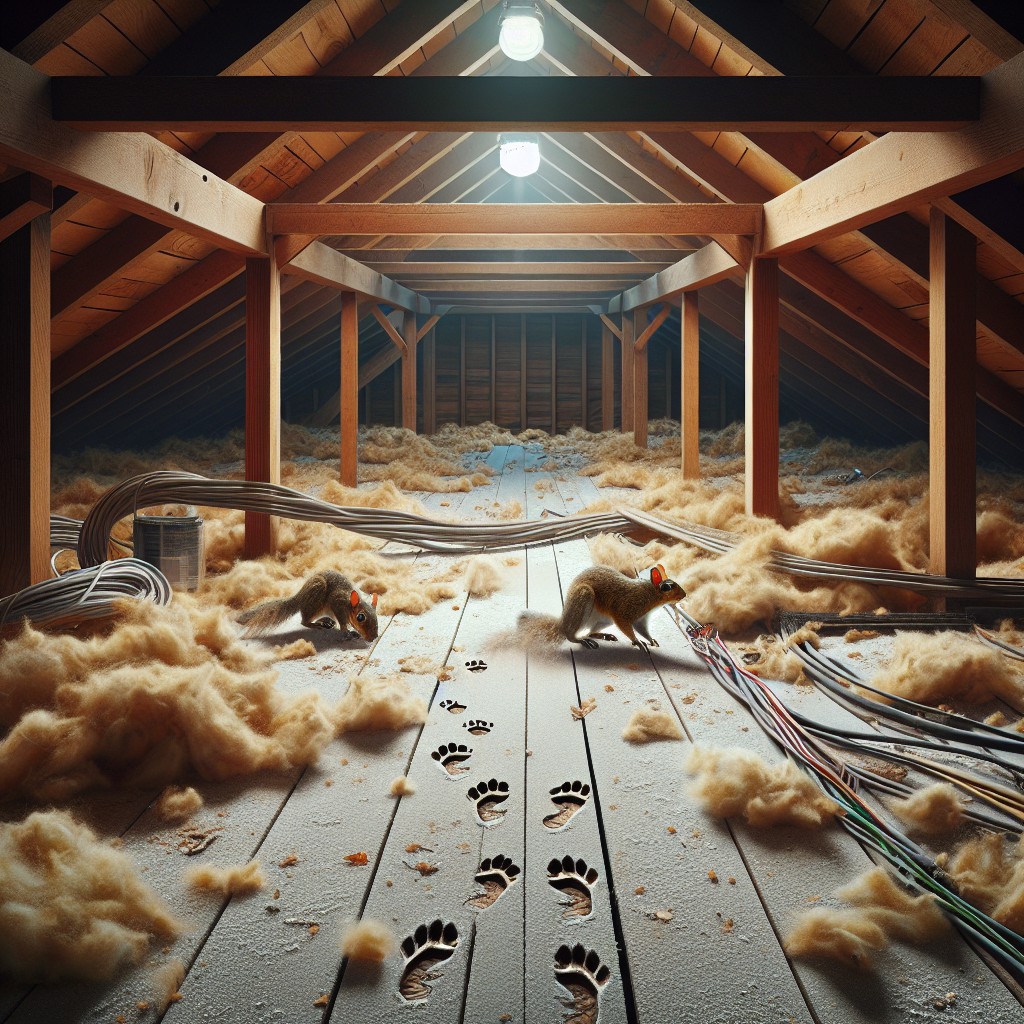Last updated on
Learn effective strategies to safely and humanely remove squirrels from your attic and prevent their return.
Key takeaways:
- Unusual noises and damage indicate squirrel infestation.
- Seal openings in the attic to prevent squirrel entry.
- Use a one-way excluder door to safely remove squirrels.
- Call a professional if infestation persists or poses risks.
- Take preventative measures to keep squirrels from returning.
Signs of a Squirrel Infestation

Observing unusual noises during the day, particularly scratching and scampering sounds from above, often indicates the presence of squirrels. Other indicators include gnaw marks on wood, wires, or structural components, as well as nests made from shredded materials. You might also encounter droppings or detect a peculiar odor stemming from urine or feces. Inspecting the attic for these signs can confirm infestation. Look for entry points or damage to roofing materials where squirrels may have gained access.
Seal Openings in Your Attic
Squirrels can squeeze through small gaps in your home’s exterior, making a thorough inspection crucial. Examine the attic during daylight hours for any streams of light indicating holes or cracks.
Begin by checking common entry points, such as where eaves and soffits meet, roof vents, and where pipes and wiring enter the house.
Once identified, repair any structural damage with sturdy materials. Use metal flashing or mesh hardware cloth to cover holes, as these materials resist gnawing. Apply weather-resistant sealants to fill in smaller cracks and crevices.
Remember to trim tree branches that overhang the roof, as they can provide squirrels with easy access to the attic. Regular maintenance of these areas will help prevent future wildlife entry.
Use a One-Way Excluder Door
A one-way excluder door is an effective tool that allows squirrels to leave your attic without a way to return. When installing this device, it’s crucial to identify the squirrels’ main entry point as the location for setup.
The door’s design ensures that once the squirrel exits for food or water, it cannot get back inside. To bolster the efficacy of this method, couple the excluder with nearby squirrel repellents like noise devices or repellent sprays.
Always check your state’s wildlife regulations before handling or relocating squirrels, as some regions have specific requirements or protections for wildlife.
When to Call a Professional
Recognizing the complexity of the situation is pivotal; squirrel removal can be difficult and risky. If you’ve sealed entry points and installed one-way doors, but squirrels persist, it’s time to seek professional help. This is particularly true in the following scenarios:
- Multiple squirrels are nesting, leading to a larger infestation.
- You’ve noticed extensive damage to wiring or building structure.
- There is a risk of disease from squirrel droppings and urine.
- You are unsure of how to handle trapped or deceased squirrels.
- Local wildlife protection laws are unclear or strict, requiring expert intervention.
Experienced wildlife control experts will assess the situation, humanely remove the squirrels, and propose long-term prevention strategies. This ensures a safe and legal resolution to your squirrel problem.
How to Prevent Squirrels From Returning
Maintaining a squirrel-free attic is an ongoing process. Here are practical steps to deter these critters:
- Trim tree branches that hang over your roof to remove easy access points.
- Install metal flashings to protect vulnerable areas like roof edges and fascia boards.
- Secure vent covers, louvers, and chimney caps with heavy-duty hardware cloth.
- Remove food sources by keeping bird feeders away from the house and securing garbage lids.
- Inspect your attic periodically for signs of squirrel activity, especially before and after winter.
